You’ll prevent mice entry most effectively by sealing three critical foundation vulnerabilities: pipe and utility line penetrations that create quarter-inch gaps, foundation cracks with deteriorating mortar joints from settling and weathering, and foundation-to-siding connection seams where openings develop. Use weatherproof caulk, steel wool backing, and rodent-proof sealants for pipes, high-quality masonry sealants for cracks, and copper mesh or metal flashing for connection points. Proper sealing techniques guarantee lasting protection.
Pipe and Utility Line Penetrations Through Foundation Walls
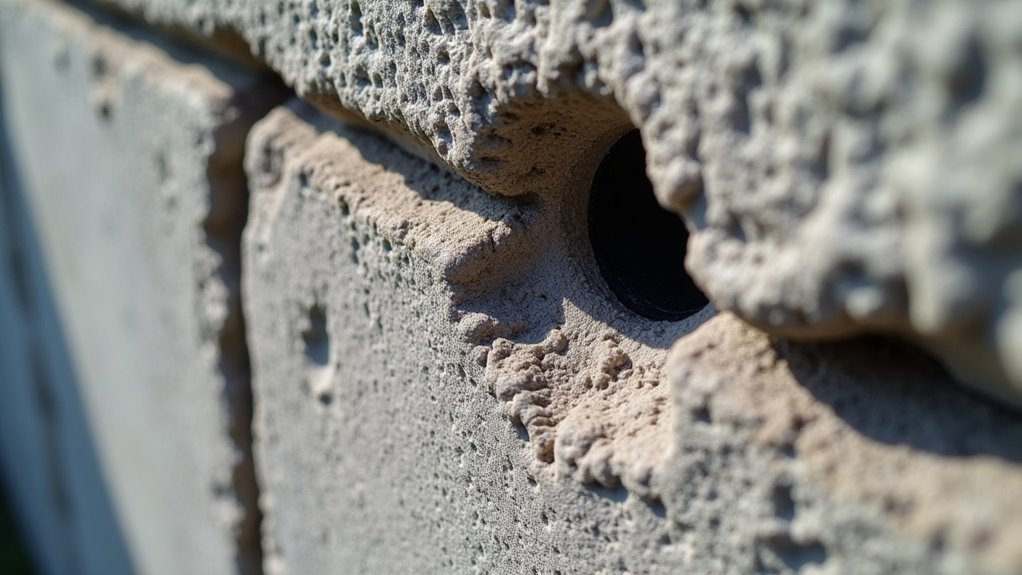
When pipes and utility lines pass through your foundation walls, they create gaps that can be as small as 1/4 inch in diameter—perfect entry points for determined mice.
You’ll need to seal these vulnerabilities with weatherproof caulk or specialized rodent-proof sealants to block mice entry effectively.
Before applying sealant, stuff steel wool into larger gaps as backing material. This creates a physical barrier that discourages rodent gnawing while providing better adhesion for your chosen sealant.
Don’t forget regular inspections of utility line openings. Foundation settling and movement can create new gaps over time.
Proper sealing serves double duty—it blocks mice while preventing moisture intrusion that could damage your foundation structure.
Foundation Cracks and Mortar Joint Deterioration Points
Even minor foundation cracks present serious vulnerabilities in your home’s defense against mice, as these quarter-inch openings provide perfect entry routes for persistent rodents.
Quarter-inch foundation cracks create highways for determined mice seeking entry into your home’s vulnerable perimeter defenses.
Mortar joint deterioration creates expanding gaps and cracks through weathering and settling, transforming your foundation into multiple access points.
Your foundation maintenance strategy should include:
- Conduct thorough inspections quarterly to identify new cracks before they worsen
- Schedule professional tuck pointing immediately when mortar shows deterioration signs
- Apply high-quality masonry sealants specifically designed for foundation materials
- Monitor sealed areas monthly to guarantee repairs remain intact against rodent pressure
Don’t underestimate these seemingly minor foundation vulnerabilities.
Regular maintenance and proper sealants create an effective rodent prevention barrier, protecting your home from unwanted intrusions.
Foundation-to-Siding Connection Gaps and Seams
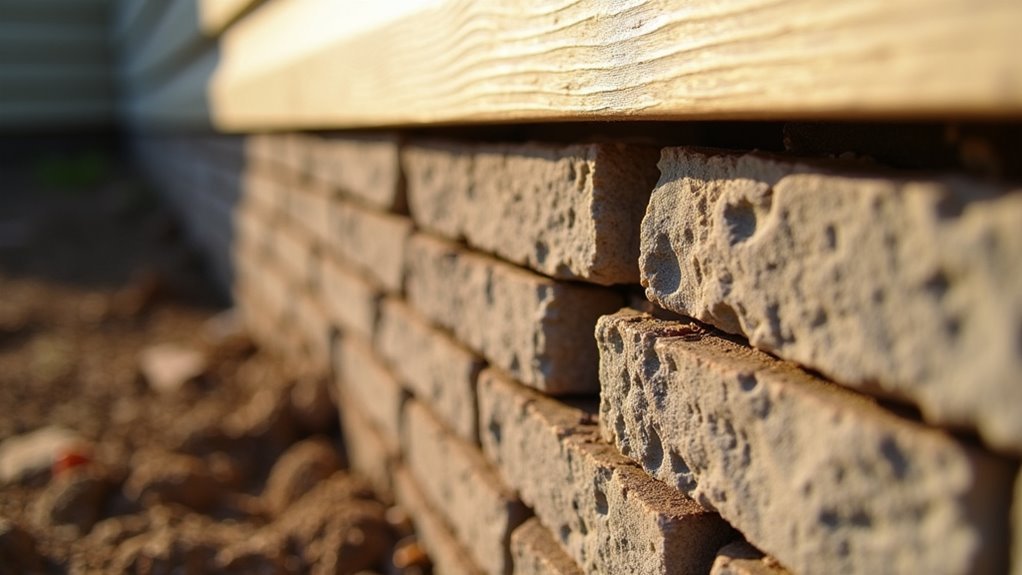
Where your foundation meets your home’s siding, hidden gaps create prime entry points that mice exploit with remarkable persistence.
You’ll need to inspect gaps along the entire foundation-to-siding connection, as these seams often develop openings just 1/4 inch wide—enough for mice to squeeze through.
Check that your bottom siding row sits flush against the foundation. When you spot misalignment or deteriorating mortar, you’ve identified a potential mouse entry point requiring immediate attention.
For effective rodent proofing, seal these gaps and seams using appropriate sealing materials like caulk or metal flashing.
Regular maintenance prevents future vulnerabilities.
Consider sturdy materials such as copper mesh or Xcluder fabric for enhanced protection, as these prevent mice from gnawing through your barriers.
Frequently Asked Questions
How to Fill Gaps to Prevent Mice?
You’ll want to stuff steel wool into larger gaps first, then apply silicone caulk or concrete patch over it. Make sure you’re filling even quarter-inch openings completely and smoothly.
What Can I Put Around Foundation to Keep Mice Out?
You can install hardware cloth or wire mesh around your foundation’s perimeter. Apply weatherproof caulk to seal small cracks, use steel wool for larger gaps, and guarantee proper drainage to prevent water damage that creates new openings.
What Gaps Can Mice Fit Through?
You’d be surprised how tiny spaces mice can squeeze through. They’ll fit through any gap that’s just 1/4 inch in diameter or larger, which is roughly the size of a dime.
What Is the Best Gap Filler for Rodents?
You’ll want steel wool as your primary gap filler since mice can’t chew through its tightly packed fibers. Combine it with silicone caulk for smaller openings or copper mesh for larger gaps.
In Summary
You’ve identified the three most vulnerable entry points where mice commonly infiltrate your home’s foundation. By sealing pipe penetrations with steel wool and caulk, repairing foundation cracks with appropriate fillers, and closing gaps between your foundation and siding, you’ll create an effective barrier against rodent intrusion. Don’t overlook these critical areas—they’re your first line of defense in maintaining a mouse-free home environment.

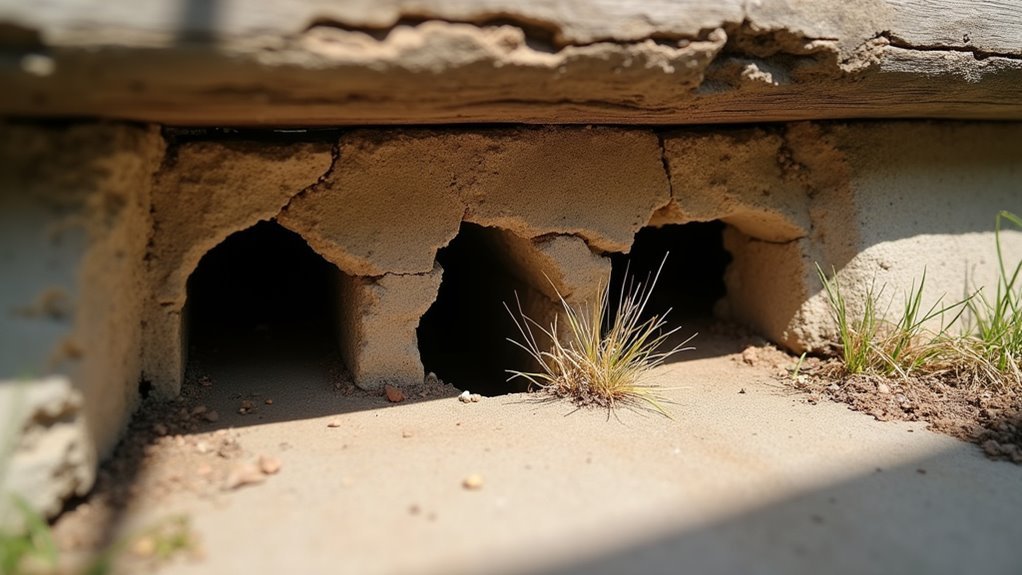
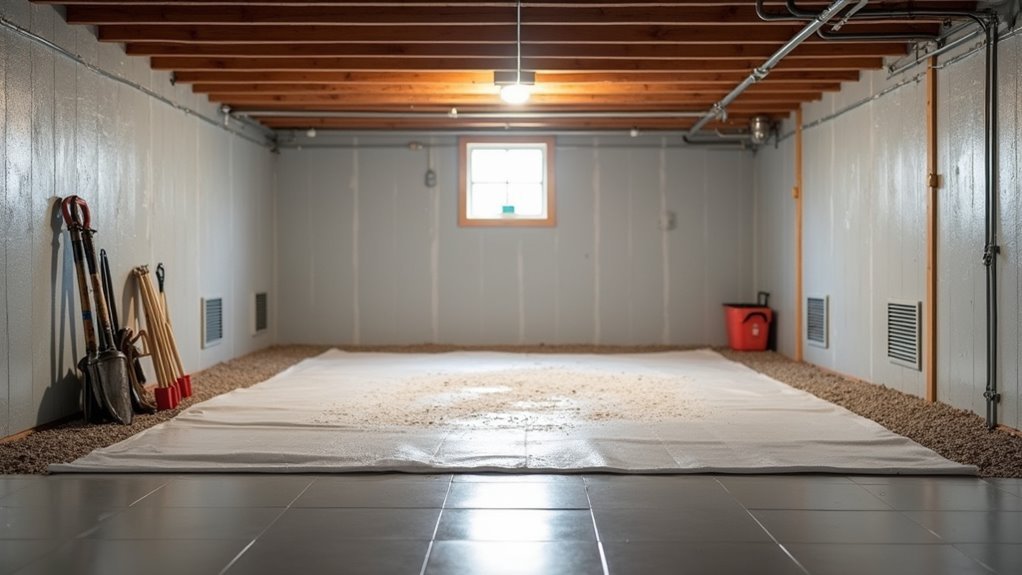
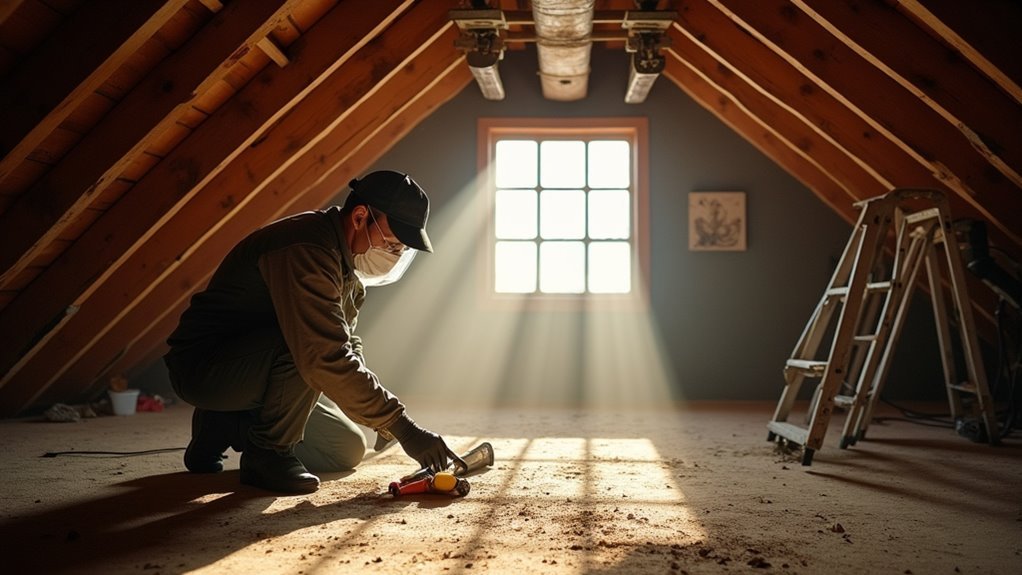
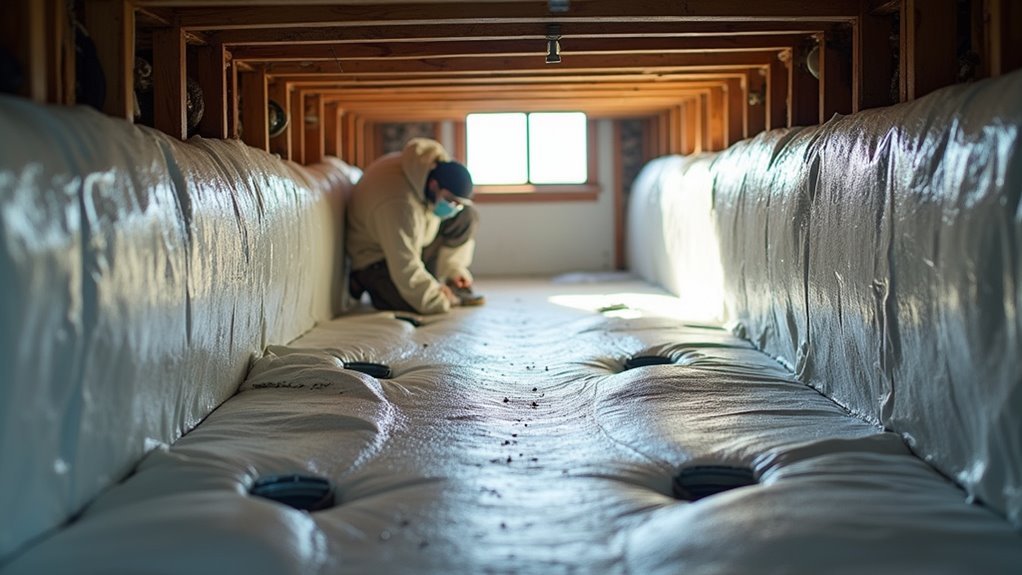
Leave a Reply